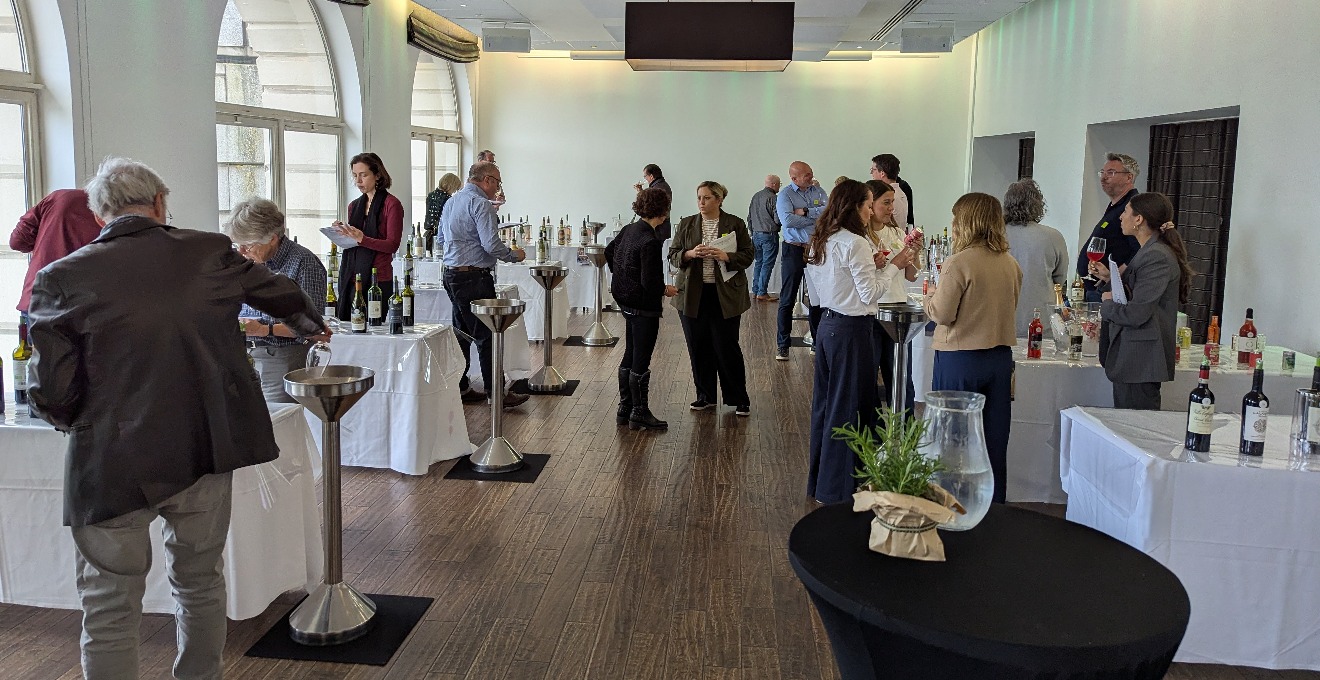
I was invited to the Waitrose & Partners Spring Wine Tasting in London in April 2025, where 159 products were showcased across all drinks categories. The selection reflected a clear focus on both innovation and quality, with several key trends standing out.
For Waitrose, Crémant is currently the fastest-growing category, with sales up 19% compared to last year. There has also been a notable rise in interest in lesser-known regions through the Loved & Found range, which now includes six new varieties. Their own label wines are also seeing real momentum, particularly the No.1 range which has doubled in size and champions classic, premium regions. The Blueprint range continues to offer quality wines that represent popular regional and varietal styles at an accessible level.
Among the many excellent wines on show, these most stood out for their character, distinctiveness, and appeal:

Telmont Réserve Brut NV Champagne, France – £56.00 (12%)
A blend of 40% Chardonnay, 31% Pinot Noir, and 29% Pinot Meunier, with fruit sourced from Damery, Champignol-lez-Mondeville, and Urville. The wine was aged for three years on its lees. All Telmont cuvées now come in green bottles made from 85% recycled glass and are 100% recyclable. This one had a floral aroma with subtle vanilla and a fine structure having citrus and brioche flavours. It’s round and elegant and suitable for vegetarians and vegans.
Pommery Brut Royal Rosé NV Champagne, France (Chelsea Flower Show Gift Box) – £50.00 (12.5%)
Comprising 37% Pinot Noir, 32% Chardonnay, and 31% Pinot Meunier, this rosé features grapes from the Grand Cru village of Bouzy. Aged 12 months on lees, it offers a graceful floral aroma and a mouthfeel that balances brioche with fruit character. It lingers beautifully. What stood out is how it retains the brightness and precision of a white Champagne, without veering into the overly red-fruited territory that some rosé Champagnes fall into. Vegetarian and vegan friendly.
Le Mesnil Blanc de Blancs Grand Cru NV Champagne, France – £40.00 (12.5%)
Made from 100% Chardonnay and aged for five years in bottle after secondary fermentation, this Champagne comes from vineyards farmed sustainably and largely by hand. Fruity and pastry notes with a hint of minerality come through clearly. Available through Waitrose Cellar only and suitable for vegetarians and vegans.
Côté Mas Rosorange Rosé 2024, Languedoc-Roussillon, France – £10.00 (12.5%)
A new and quite bold addition, made from a mix of 30% Cinsault, 25% Grenache Noir, 20% Grenache Gris, 15% Macabeo, and 10% Vermentino. Grapes are night-harvested with partial skin maceration and blended fermentation. The result is compellingly unusual. The scent is of candied citrus or maybe pear drops, with rich lychee flavour on the tongue. It’s vibrant, fresh, and impressively full-flavoured for a rosé. This is a distinctive crossover between rosé and orange wine styles.
Waitrose No.1 Grüner Veltliner 2024, Niederösterreich, Austria – £12.00 (12%)
A new vintage of 100% Grüner Veltliner with lively citrus energy and hints of apricot. Rounded and refreshing, it’s a great example of its type and shows how well the No.1 range is curated. Vegetarian and vegan.
Château de Rochemorin Pessac-Léognan 2023, Bordeaux – £24.00 (13%)
A pure Sauvignon Blanc matured ten months in oak (35% new) with full lees contact and bâtonnage. Honeysuckle, oak, and apricot come through clearly and the flavours of apple and pear create an intense, juicy and fresh wine with a subtle smoky twist. This was my lunch wine, and it paired brilliantly across a wide range of dishes. Vegetarian and vegan.
El Rayo Olarra Crianza 2021, Rioja – £15.00 (13.5%)
Made from 80% Tempranillo, 10% Graciano, and 10% Mazuelo grown near Logroño. This is a wine with great aromas of red fruit and liquorice. On the tongue, it’s surprisingly light in body yet strong in flavour, with bright fruit that’s not overpowered by oak spice.
Escarpment Noir 2023, Wairarapa – £21.00 (13.5%)
A New Zealand Pinot Noir showing an attractive red berry character, earthy undertones, gentle spice and a savoury core. Ripe cranberry, cherry and strawberry notes emerge alongside a lovely savouriness, making for a well-structured and balanced wine. Vegetarian and vegan.
Hospice de Beaune Premier Cru Cuvée Rousseau-Deslandes 2018, Burgundy – £106.00 (13.5%)
100% Pinot Noir from the famed annual Hospices auction, where Louis Latour purchases and ages the wines on behalf of clients. This wine is slightly brown with an intense aromatic cherry profile. Some might criticise the cross-country comparison, but it reminded me of a top end Rioja, both in scent and taste, but with the added grip of Burgundian tannins. Only available via Waitrose Cellar.
Beyond these highlights, there were some extra wines of real merit. Noteworthy mentions include:
Waitrose No.1 Brut Special Reserve Vintage 2018, Champagne – £39.00
Chapel Down Grand Reserve 2019, South of England – £45.00
Domaine du Vieux Vauvert Vouvray 2023, Loire – £11.00 (particularly if you prefer sweeter wines)
Tre Fiori Greco di Tufo 2024, Campania – £12.00
Altos de Torona Albariño 2024, Galicia – £15.00
Rapaura Springs Rohe Rapaura Sauvignon Blanc 2024, Marlborough – £19.50 (full on Sauvignon Blanc intensity)
The event was a clear demonstration of the Waitrose’s commitment to quality, variety and innovation across its wine offering. From the expanding success of Crémant and the adventurous Loved & Found range to the continued excellence of the No.1 own label and strong support for English producers, it’s evident that Waitrose is curating with both tradition and modern tastes in mind.
Please note that prices may change. Not all wines are available in every store, but the full range can be browsed and ordered online at waitrosecellar.com, with next-day click and collect available from any Waitrose shop (excluding Jersey and Guernsey).














